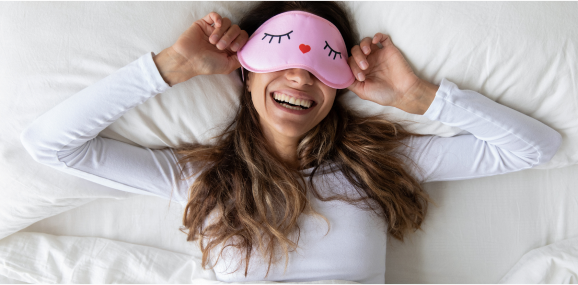There is something soothing and peaceful about waking up on a cold winter’s morning, buried underneath heavy, warm blankets. It is similar to feelings we get when we receive a warm hug from a friend or loved one.
The calming feelings we associate with a mountain of heavy blankets and warm hugs aren’t accidental. There is actually a lot of science behind it. Behavioral therapists refer to it as Deep Pressure Therapy, also known as Deep Pressure Stimulation Therapy.
This therapy method has a lot to do with sensory input, which is filtered and processed by our brains. We touch something hot, we recoil. We hear loud noises and they make us jump. Gentle pressure on the body, like a hug, is calming.
But what is Deep Pressure Therapy? How is it helpful? Here we seek to give you a complete guide to Deep Pressure Therapy.
A Look at Our Sensory Systems
Before we get into Deep Pressure Therapy and its uses, it is important to first take a look at our body’s sensory systems. Our body takes in information from the environment in multiple ways, this is done through our senses.
Taking in information from the environment through the senses is called sensory integration. This process takes place in the brain and is part of normal development when we are young.
Contrary to popular belief, our bodies have more than five senses. We actually have eight sensory systems, each used to take in information from the environment:
- Auditory system, responsible for taking in sound/hearing.
- Visual system, responsible for seeing.
- Olfactory system, responsible for processing smell.
- Gustatory system, responsible for taste.
- Tactile system, responsible for processing touch.
- Vestibular system, responsible for balance and movement.
- Proprioception system, responsible for sensing our own body’s position.
- Interoception system, responsible for internal sensors/physiological conditions.
The Nervous System and Sensory Input
Our body is composed of numerous sensory systems that help relay information to our brain. This information is ultimately processed by the nervous system.
Our nervous system is divided into two major subdivisions:
- Central nervous system (CNS)
- Peripheral nervous system (PNS)
The two primary components of our CNS are the spinal cord and brain. The PNS acts as a relay, connecting the CNS to the rest of the body via nerves. It carries messengers back and forth, from the CNS to the muscles, organs, and other body systems.
But, the peripheral nervous system is also composed of two subdivisions of its own: the somatic nervous system and the autonomic nervous system. The former is associated with voluntary or conscious activities, relaying sensory and motor information to the CNS. Meanwhile, the autonomic nervous system plays a role in sensory input that is involuntary, helping control our glands and organs. The autonomic nervous system can be divided into the sympathetic and parasympathetic nervous systems.
Sympathetic Nervous System
The sympathetic nervous system is primarily involved in prepping the body for stress-related events and activities. For example, some of its functions include:
- Dilating the pupils
- Increasing heart rate
- Dilating bronchi (more volume during breathing)
- Inhibiting salivation and digestion
In effect, the sympathetic nervous system is responsible for the body’s stress response, sometimes referred to as “fight or flight.”
When the sympathetic nervous system is triggered by stressful events or stressors, there is also a hormonal response, namely the release of cortisol and adrenaline.
These hormones are great if you need to flee from a dangerous situation. Unfortunately, chronic stress and anxiety — work-related, school, financial, or anything else — can take a toll on the body. It keeps the sympathetic nervous system primed and the stress hormones flowing, which can have negative effects on your health.
Parasympathetic Nervous System
The parasympathetic nervous system acts as the reverse, helping return the body back to routine operations. For example, parasympathetic functions include:
- Constricting the pupils
- Decreasing heart rate
- Constricting bronchi
- Stimulating salivation and digestion
These two systems work to keep balance and equilibrium within the body, also called homeostasis. They work in tandem with one another and serve complementary functions. They also play a pivotal role as it relates to the efficacy of Deep Pressure Therapy.
What Is Deep Pressure Therapy?
Your brain is constantly bombarded by sensory inputs and is constantly taking in information about the environment around you. When it has difficulty processing this sensory information, issues can arise, from motor and language issues to social-emotional difficulties.
In short, Deep Pressure Therapy, or Deep Touch Pressure Stimulation, helps relax the nervous system by applying gentle pressure or compression to the body. Put another way, Deep Pressure Therapy exerts firm tactile sensory input equally across the body.
It is administered through gentle pressure. This could be in the form of firm hugs, squeezing, swaddling, weighted material, or compression. In effect, Deep Pressure Therapy provides proprioceptive input for the whole body.
A Form of Proprioceptive Sensory Input
Deep Pressure Therapy is a form of proprioceptive sensory input. As stated above, the proprioceptive system is responsible for processing muscle and joint input.
It helps inform the body of its position in space and directs the muscles on how to react to stimuli. Proprioceptive input is crucial for building body awareness.
When the tactile inputs are applied to the body (like hugging or compression) it puts pressure on the muscle and joints, giving your brain a better sense of where your body is in relation to space.
The therapeutic result has a calming and soothing effect, similar to the feelings you get from that mountain of blankets or that warm hug.
Deep Pressure Therapy & Physiological Responses
Deep Pressure Therapy has quite a powerful effect on the body’s autonomic nervous system and physiological arousal. This system is responsible for regulating functions within your body, especially in response to stressors.
Its Effects on the Parasympathetic System
As stated above, the parasympathetic system is primarily responsible for regulating functions within the body that are involuntary (e.g. slowing down heart rate, digestion, blood pressure, etc.).
In effect, Deep Pressure Therapy, due to its tactile sensory input and influence on the proprioceptive sense, increases this parasympathetic activity, aiding its regulatory function.
Its Effects on the Sympathetic System
The sympathetic system elicits the body’s “fight or flight” response during stressful events or emergencies, and floods the body with stress hormones. Deep Pressure Therapy helps decrease its fight or flight response.
Deep Pressure Therapy has implications for the whole autonomic nervous system, helping it maintain balance — decreasing the body’s sympathetic response while increasing the parasympathetic system activity.
Deep Pressure Therapy and Hormone Response
The calming effects associated with Deep Pressure Therapy are the result of the hormonal responses it elicits, namely the increase in endorphins. Produced by the pituitary gland at the behest of the CNS, endorphins consist of a large group of peptides.
Acting as opiate receptors in the brain, endorphins are typically released to help reduce pain and elicit feelings of pleasure. That is why they are sometimes referred to as “feel-good hormones,” due to their ability to alleviate feelings of stress and anxiety.
Deep Pressure Therapy also impacts another chemical messenger known as serotonin, the mood-regulating hormone, and the reward-modulating neurotransmitter dopamine.
Serotonin is the key hormone when it comes to stabilizing mood and emotions. In fact, too little serotonin production has been linked to depression and anxiety.
Serotonin is also essential for sleep, as it helps stimulate parts of the brain that are responsible for controlling the sleep-wake cycle. In effect, serotonin acts as the chemical precursor to melatonin — the sleep hormone.
The Benefits of Deep Pressure Therapy
Deep Pressure Therapy was originally applied and used by occupational therapists to help children with autism spectrum disorder, specifically those with sensory disorders.
The chief pioneer in this field of study was Dr. Temple Grandin, who even created and built a deep-pressure device known as the Hug Machine. She created it to help treat her own issues with hypersensitivity.
Therapeutically, deep pressure is applied through firm, gentle squeezing, pressure, compression, stroking, or hugging. Pressure can be applied with various products and in various ways, from compression wraps to hands.
Here are some examples of how Deep Pressure Therapy can be administered:
- Deep massage: One of the most popular forms of touch therapy is deep massage where various amounts of pressure are applied on the body by a trained massage therapist. Typically, deep massage is administered in a dark room with soothing music to calm the senses.
- Weighted blankets: Therapeutically, weighted blankets are probably one of the most popular forms of Deep Pressure Therapy. These are generally designed to be about 10 percent of a person’s body weight and get evenly distributed across the body. The downsides to weighted blankets are the cost, non-portability, and their heat-trapping effects during sleep. This is where lighter, compression blankets have the advantage.
- Bear hugs and therapy dogs: Since Deep Pressure Therapy is about firm and gentle touch and pressure, the classic bear hug is one way it is administered. This is especially helpful for those prone to anxiety or who get overstimulated easily. Believe it or not, there are also Deep Pressure Therapy dogs, trained to use their bodies to cover their owners with gentle pressure.
Some of the Observational Benefits
While every person’s experience will be different, here are some of the positive effects and benefits that have been observed with deep pressure therapy:
- Induces a sense of calm
- Decreases feelings of anxiety
- Increases feelings of happiness
- Improves focus
- Promotes better sleep
- Decreases hypersensitivity to touch
- Improves proprioceptive processing
- Improves spatial awareness
Deep Pressure Therapy to Boost Mood
Deep Pressure Therapy has been shown to help improve mood by inducing effects upon certain hormones in the body.
Research has shown both the long-term and immediate effects that touch therapy (e.g. massage and deep pressure therapy) can have on the body’s biochemistry. This is especially true in regard to mood-regulating hormones.
In fact, researchers have reported serotonin and dopamine level increases after touch therapy — 28% and 31% respectively. These increases have a positive and direct impact on both mood and behavior.
On the sympathetic nervous system side of things, researchers also reported a 31% decrease in cortisol levels, the primary stress hormone. All in all, the effect on these hormones helps reduce stress and anxiety while boosting mood.
Sleep and Deep Pressure Therapy
One of the most beneficial uses for Deep Pressure Therapy is in the area of sleep. A lot is happening in our bodies when we rest our heads and close our eyes at night. Cells are being repaired, memories are stored, and the immune system is building its defenses.
Unfortunately, poor sleep routines and habits can disrupt these functions. Bad habits might include caffeine before bed, poor bedroom conditions, and irregular sleep patterns.
Effects of Stress on Sleep
However, one of the things that have the most detrimental impact on sleep health is stress. The less sleep you get, the more stress you feel, the less you sleep, and round it goes — it’s a vicious cycle.
The process of sleep is driven by an internal biological mechanism, “internal clocks.” These internal clocks are composed of circadian rhythms, which represent the physical, mental, and behavioral changes that take place within a 24-hour cycle.
The sleep-wake cycle and hormone production
The sleep-wake cycle is one of them. Our sleep-wake cycle is controlled by the 24-hour cycle of day and night and is directly influenced by environmental cues like daylight.
Exposure to light causes signals to be sent to the brain to cease melatonin production (e.g. the sleep hormone). The result is alertness and wakefulness. At night, this is reversed as darkness triggers melatonin production.
Cortisol, a stress hormone, is also affected by these natural 24-hour cycles. In the day, cortisol levels are higher, at night they decrease. But chronic stress disrupts this and causes cortisol levels to remain high even at night.
The result? A decrease in melatonin production and trouble sleeping.
Deep Pressure Therapy Improves Sleep
Both acute and chronic stress can affect sleep. Stress and anxiety can easily open the door to sleep deprivation and sleep deprivation can exacerbate stress and anxiety. It is an unfortunate two-way relationship.
But, the good news is that Deep Pressure Therapy has been shown to help improve sleep.
As stated above, Deep Pressure Therapy helps relax the nervous system. This has important implications if feelings of stress and anxiety are causing issues with sleep. Impacting the sympathetic system, Deep Pressure Therapy decreases high cortisol levels that are caused by stress.
The result is better-balanced hormone production and an increase in melatonin production, which can improve sleep. In terms of sleep benefits, Deep Pressure Therapy could help induce relaxation, reduce feelings of anxiety, and promote calming feelings at bedtime.
Deep Pressure Therapy and Sleep Pod
The Sleep Pod utilizes the benefits of Deep Pressure Therapy and is specifically designed with better sleep in mind. The Sleep Pod offers the same calming feeling that comes from that mountain of blankets or those warm hugs.
The cocoon-like shape offers gentle pressure throughout the whole body, all night long. Made with ultra-breathable, lightweight material, the Sleep Pod doesn’t cause the same heat-trapping effect you’ll find with weighted blankets.
It is the perfect, portable companion to help relieve feelings of anxiety and promote relaxation at bedtime. Also, if you’re the type who needs a boost in nighttime mobility and feet freedom, the Sleep Pod Move has you covered.
The Bottom Line
Deep Pressure Therapy, or Deep Pressure Stimulation Therapy, is a popular therapy method that seeks to mimic the effects of tactile sensory input on the body. Put another way, it seeks to mimic the same calming feeling you get from a big bear hug.
As a therapy method, it has been shown to elicit positive effects on the body’s nervous system, specifically the autonomic nervous system. But, one of Deep Pressure Therapy’s biggest advantages is in the area of sleep.
Thanks to its effects on mood-stabilizing hormones it has been shown to reduce feelings of anxiety, helping people feel calmer and sleep better.
Sources:
Understanding the stress response | Harvard Health
Effects of Deep Pressure Stimulation on Physiological Arousal | AOTA
The role of endorphins in stress: evidence and speculations | NIH

































500,000+ happy customers